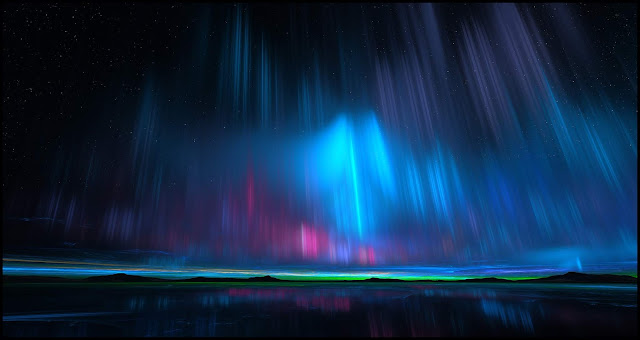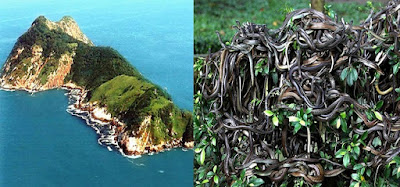Polar lights (Aurora)
An aurora also known as polar lights is a natural light display in the Earth's sky, predominantly seen in the high-latitude regions mostly like the icey regions(around the Arctic and Antarctic).The bright dancing lights of the aurora are actually collisions
between electrically charged particles from the sun that enter the earth's
atmosphere. The lights are seen above the magnetic poles of the northern and
southern hemispheres. They are known as 'Aurora borealis' in the north and 'Aurora
australis' in the south.
Auroras
are produced when the magnetosphere is sufficiently disturbed by the solar wind that
the trajectories of charged
particles in both solar wind and magnetospheric
plasma, mainly in the form of electrons and protons,
precipitate them into the upper atmosphere (thermosphere/exosphere)
due to Earth's magnetic field, where their energy is
lost.
The
resulting ionization and excitation of atmospheric constituents
emits light of varying color and complexity. The form of the aurora, occurring
within bands around both polar regions, is also dependent on the amount of
acceleration imparted to the precipitating particles. Precipitating protons
generally produce optical emissions as incident hydrogen atoms
after gaining electrons from the atmosphere. Proton auroras are usually observed
at lower latitudes.
Auroral displays appear in many colours although pale green and pink are the
most common. Shades of red, yellow, green, blue, and violet have been reported.
The lights appear in many forms from patches or scattered clouds of light to
streamers, arcs, rippling curtains or shooting rays that light up the sky with
an eerie glow.
The Northern Lights
are actually the result of collisions between gaseous particles in the Earth's
atmosphere with charged particles released from the sun's atmosphere.
Variations in colour are due to the type of gas particles that are colliding.
The most common auroral color, a pale yellowish-green, is produced by oxygen
molecules located about 60 miles above the earth. Rare, all-red auroras are
produced by high-altitude oxygen, at heights of up to 200 miles. Nitrogen
produces blue or purplish-red aurora.
The temperature above the surface of the sun is millions of degrees Celsius. At
this temperature, collisions between gas molecules are frequent and explosive.
Free electrons and protons are thrown from the sun's atmosphere by the rotation
of the sun and escape through holes in the magnetic field. Blown towards the
earth by the solar wind, the charged particles are largely deflected by the
earth's magnetic field. However, the earth's magnetic field is weaker at either
pole and therefore some particles enter the earth's atmosphere and collide with
gas particles. These collisions emit light that we perceive as the dancing
lights of the north (and the south).
The lights of the Aurora generally extend from 80 kilometres (50 miles) to as
high as 640 kilometres (400 miles) above the earth's surface.





Th second picture is amazing. I want to see that type of northern light and I am planning my Alaska northern lights tours
ReplyDelete